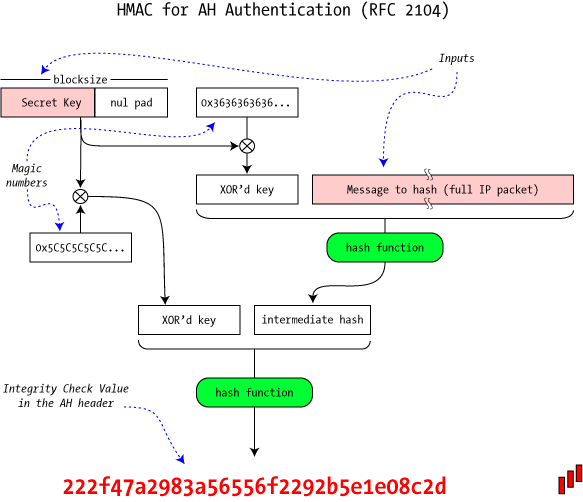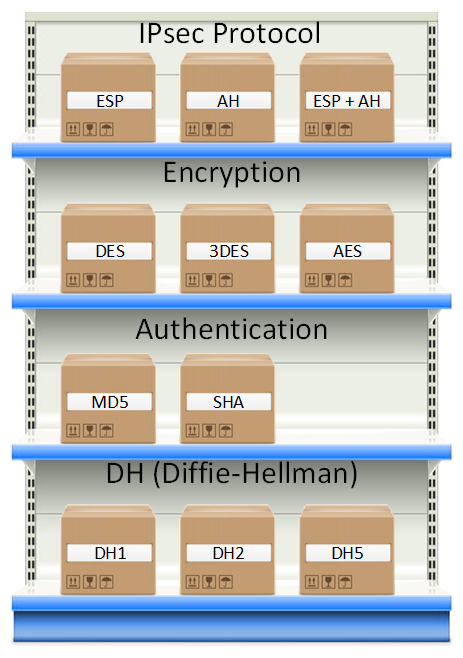Featured
Table of Contents
- – How Ipsec Works, It's Components And Purpose
- – What Is Ipsec? - Internet Protocol Security Ex...
- – Understanding Ipsec - Engineering Education (E...
- – Does Autodesk Vault Work Well With Ipsec In A...
- – What Is Ipsec? Definition & Deep Dive
- – What Is Ipsec Protocol And How Does It Work?
- – Ssl Vpn And Ipsec Vpn: How They Work
How Ipsec Works, It's Components And Purpose
IPsec authenticates and secures data packages sent over both IPv4- and IPv6-based networks. IPsec procedure headers are discovered in the IP header of a packet and define how the information in a packet is handled, including its routing and delivery throughout a network. IPsec adds several components to the IP header, including security details and several cryptographic algorithms.

ISAKMP is defined as part of the IKE protocol and RFC 7296. It is a framework for crucial establishment, authentication and negotiation of an SA for a safe exchange of packets at the IP layer. To put it simply, ISAKMP defines the security criteria for how two systems, or hosts, communicate with each other.
They are as follows: The IPsec procedure begins when a host system recognizes that a packet requires defense and must be sent utilizing IPsec policies. Such packets are considered "intriguing traffic" for IPsec functions, and they set off the security policies. For outgoing packages, this indicates the suitable encryption and authentication are used.
What Is Ipsec? - Internet Protocol Security Explained
In the 2nd step, the hosts use IPsec to work out the set of policies they will use for a secured circuit. They also verify themselves to each other and set up a secure channel between them that is used to negotiate the method the IPsec circuit will encrypt or confirm information sent across it.

After termination, the hosts deal with the private keys utilized throughout information transmission. A VPN basically is a personal network executed over a public network. Anyone who links to the VPN can access this private network as if directly connected to it. VPNs are frequently used in organizations to allow employees to access their business network remotely.
Generally used in between secured network gateways, IPsec tunnel mode enables hosts behind one of the gateways to communicate safely with hosts behind the other gateway. For instance, any users of systems in a business branch office can firmly get in touch with any systems in the main office if the branch workplace and primary workplace have secure gateways to function as IPsec proxies for hosts within the particular offices.
Understanding Ipsec - Engineering Education (Enged) ...
IPsec transport mode is utilized in cases where one host requires to engage with another host. The two hosts work out the IPsec circuit straight with each other, and the circuit is typically torn down after the session is total.
With an IPsec VPN, IP packages are safeguarded as they take a trip to and from the IPsec entrance at the edge of a personal network and remote hosts and networks. An SSL VPN protects traffic as it moves in between remote users and an SSL gateway. IPsec VPNs support all IP-based applications, while SSL VPNs only support browser-based applications, though they can support other applications with customized development.
See what is finest for your company and where one type works best over the other.
Does Autodesk Vault Work Well With Ipsec In A Vpn ...
Finally, each IPsec endpoint validates the identity of the other endpoint it desires to communicate with, making sure that network traffic and information are only sent to the desired and permitted endpoint. Regardless of its fantastic energy, IPsec has a few issues worth pointing out. Direct end-to-end interaction (i. e., transmission approach) is not always offered.
The adoption of numerous local security guidelines in massive dispersed systems or inter-domain settings might position severe concerns for end-to-end interaction. In this example, assume that FW1 requires to inspect traffic material to spot intrusions and that a policy is set at FW1 to deny all encrypted traffic so regarding implement its content examination requirements.
Users who utilize VPNs to from another location access a personal service network are put on the network itself, giving them the very same rights and functional abilities as a user who is linking from within that network. An IPsec-based VPN may be developed in a variety of ways, depending upon the needs of the user.
What Is Ipsec? Definition & Deep Dive
Due to the fact that these parts may stem from various suppliers, interoperability is a must. IPsec VPNs allow smooth access to enterprise network resources, and users do not always need to use web gain access to (gain access to can be non-web); it is therefore a solution for applications that require to automate communication in both ways.
Its framework can support today's cryptographic algorithms as well as more powerful algorithms as they end up being offered in the future. IPsec is a necessary component of Web Protocol Variation 6 (IPv6), which companies are actively deploying within their networks, and is highly suggested for Internet Protocol Version 4 (IPv4) implementations.
It offers a transparent end-to-end safe and secure channel for upper-layer procedures, and executions do not need modifications to those protocols or to applications. While having some downsides associated with its intricacy, it is a mature protocol suite that supports a range of file encryption and hashing algorithms and is extremely scalable and interoperable.
What Is Ipsec Protocol And How Does It Work?
Like VPNs, there are numerous ways a No Trust design can be executed, but services like Twingate make the process considerably simpler than needing to wrangle an IPsec VPN. Contact Twingate today for more information.

IPsec isn't the most typical internet security procedure you'll use today, however it still has an essential role to play in securing web communications. If you're using IPsec today, it's probably in the context of a virtual private network, or VPN. As its name implies, a VPN produces a network connection in between 2 machines over the general public web that's as safe and secure (or nearly as safe) as a connection within a personal internal network: most likely a VPN's most popular usage case is to permit remote workers to access secured files behind a corporate firewall as if they were operating in the workplace.
For most of this article, when we say VPN, we indicate an IPsec VPN, and over the next a number of areas, we'll explain how they work. A note on: If you're looking to set up your firewall to allow an IPsec VPN connection, make certain to open UDP port 500 and IP ports 50 and 51.
Ssl Vpn And Ipsec Vpn: How They Work

As soon as this has all been set, the transportation layer hands off the data to the network layer, which is mainly managed by code working on the routers and other elements that comprise a network. These routers choose on the route individual network packets take to their location, but the transport layer code at either end of the communication chain doesn't require to understand those details.
On its own, IP does not have any integrated security, which, as we kept in mind, is why IPsec was established. Today, TLS is built into practically all internet browsers and other internet-connected applications, and is more than enough protection for daily internet use.
That's why an IPsec VPN can include another layer of security: it includes securing the packets themselves. An IPsec VPN connection begins with establishment of a Security Association (SA) in between 2 communicating computers, or hosts. In basic, this involves the exchange of cryptographic keys that will enable the celebrations to encrypt and decrypt their interaction.
Table of Contents
- – How Ipsec Works, It's Components And Purpose
- – What Is Ipsec? - Internet Protocol Security Ex...
- – Understanding Ipsec - Engineering Education (E...
- – Does Autodesk Vault Work Well With Ipsec In A...
- – What Is Ipsec? Definition & Deep Dive
- – What Is Ipsec Protocol And How Does It Work?
- – Ssl Vpn And Ipsec Vpn: How They Work
Latest Posts
Get The Best Business Vpn 2023 - Expressvpn
The 5 Best Vpn Services For The Bay Area
Best Vpns For China In 2023 (+ My Strategy To Use Them)
More
Latest Posts
Get The Best Business Vpn 2023 - Expressvpn
The 5 Best Vpn Services For The Bay Area
Best Vpns For China In 2023 (+ My Strategy To Use Them)